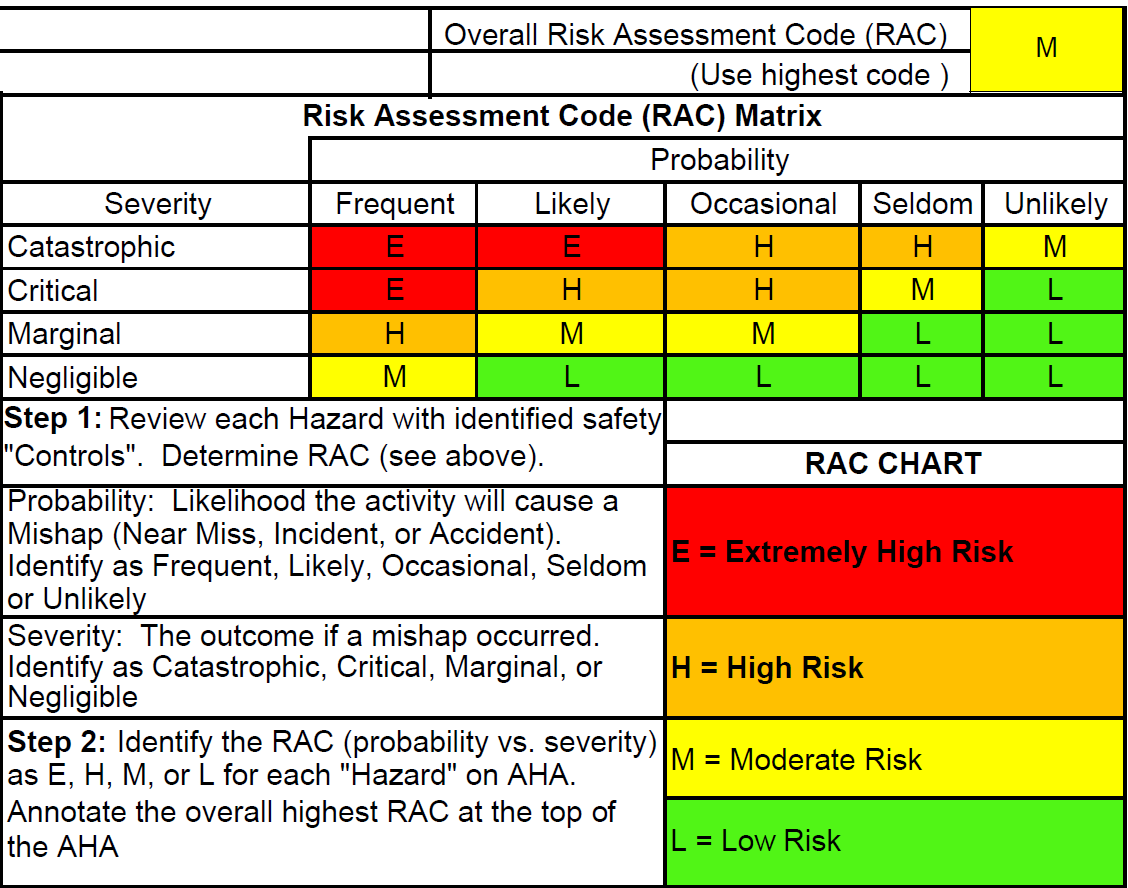
With every Accident Activity Analysis, comes the need for risk assessment codes. This standardized system essentially takes all of the information you’ve compiled in your AHA and gives it a value based on each hazard’s severity, probability of occurrence.
These codes are invaluable when reviewing safety protocols with your employees, as they get a real understanding of the risk associated with each part of the job.
If you’re looking to put together your own risk assessment codes, you’ve come to the right place. Here’s a step by step on how to assign them:
Assigning Risk Assessment Codes
1. Identify Your Hazards and Risks
The first step to assigning risk assessment codes is to identify your hazards and their potential outcomes. These can range from examples like the risk of falling off of a tall ladder, or the risk of cutting oneself due to improper use of power tools. Each necessary action on the job should be thoroughly examined for anything that could potentially harm a team member.
Related article: Activity Hazard Analysis – Complete Instructions & Free Template
2. Assign Consequence
Hazards you previously identified within each step should be assessed and severity of consequence assigned for that step. For example, a slipping hazard from walking on the wet tile may not be in the same category as falling off of the tenth floor of a building. One by one, go through all of your hazards and the risks associated with them and assign a value using the following:
- Catastrophic
- Critical
- Marginal
- Negligible
This will serve as a great way to translate the significance of the various risks to your team so that they fully understand what’s at stake.
Related article: How to Quickly Create A Fall Rescue Plan
3. Determine Probability
Along with figuring out how severe a consequence each hazard can potentially incur, there is also the process of determining its probability. If a hazard is very likely to happen (usually things like hitting your hand with a hammer, etc.), it will ultimately end up elevating your risk assessment code. Depending on the likelihood, assign each hazard its own probability of occurrence as follows:
- Frequent
- Likely
- Occasional
- Seldom
- Unlikely
This will help your team understand the chances of each hazard happening to them, rather than focusing purely on how bad it would be.
Related article: What Business Are We Really In? Risk Management!
4. Apply A Risk Assessment Code To Each Step
This is where everything comes together. Using the consequence and probability values you identified earlier, cross-reference them with the risk assessment chart below. Based on its own unique assignments, each of your steps will now have its own code, ranging from E to L Here’s what those letters mean, according to the Federal Government:
- (E) Extremely High Risk: Represents an immediate danger to life, health, property, or infrastructure and requires immediate correction or control of the hazard to a lower level of risk through engineering alternative methods. No work should be performed that is determined to be an Extremely High Risk.
- (H) High Risk: Represents a high level of threat to life, health, property, or infrastructure and requires immediate correction or control of the hazard to a lower level of risk through engineering alternative methods. No work should be performed that is determined to be High Risk.
- (M) Moderate Risk: Represents a medium level of risk to life, health, property, or infrastructure, with correction planned and completed, or hazard controlled to a lower level of risk.
- (L) Low Risk: Represents the lowest level risk and is considered minor. The correction of these risks can be planned in out-years.

5. Determine A Risk Assessment Code To Your AHA
The final step in determining an overall risk assessment code for your AHA is simple – you must use the highest RAC code from any step within the AHA. If any step is an M or H or E, then the entire AHA would equal that risk assessment code.
Remember, the Federal Government requires an approved AHA prior to any work being performed and will not allow work to be performed that has a risk assessment code that exceeds a Moderate Risk.
There you have it, your very own set of risk assessment codes. If you’re serious about maintaining safety on your worksite and would like to save hundreds of hours on compiling AHAs, then Gadzoom may be able to help. Our software uses a library of EM 385-1-1 compliant templates and analyses to help streamline your workflow. Click here to learn more.
Related article: 3 Benefits Of Moving Your Construction Admin & Safety Documents Online
About Gadzoom
Gadzoom enables you to generate important documents in minutes, giving you the freedom to run and manage your business without all the headaches that come with administrative responsibilities. Our company was born to make construction document management as streamlined as possible. Create a variety of government compliant safety and administrative documents at the touch of a button. If you’re interested in learning more, visit our site today.